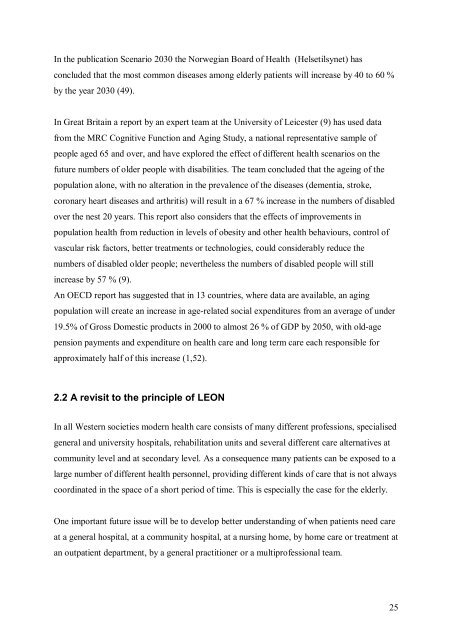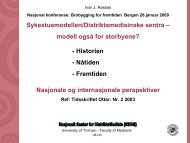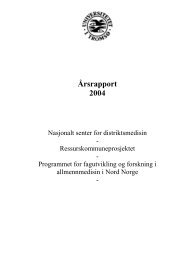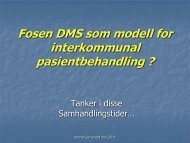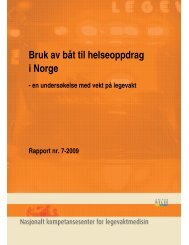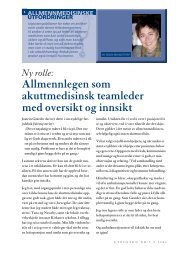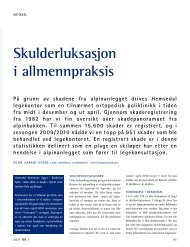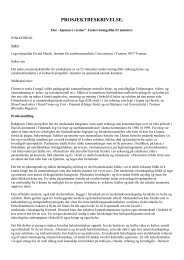Helge Garåsen The Trondheim Model - NSDM
Helge Garåsen The Trondheim Model - NSDM
Helge Garåsen The Trondheim Model - NSDM
Create successful ePaper yourself
Turn your PDF publications into a flip-book with our unique Google optimized e-Paper software.
In the publication Scenario 2030 the Norwegian Board of Health (Helsetilsynet) has<br />
concluded that the most common diseases among elderly patients will increase by 40 to 60 %<br />
by the year 2030 (49).<br />
In Great Britain a report by an expert team at the University of Leicester (9) has used data<br />
from the MRC Cognitive Function and Aging Study, a national representative sample of<br />
people aged 65 and over, and have explored the effect of different health scenarios on the<br />
future numbers of older people with disabilities. <strong>The</strong> team concluded that the ageing of the<br />
population alone, with no alteration in the prevalence of the diseases (dementia, stroke,<br />
coronary heart diseases and arthritis) will result in a 67 % increase in the numbers of disabled<br />
over the nest 20 years. This report also considers that the effects of improvements in<br />
population health from reduction in levels of obesity and other health behaviours, control of<br />
vascular risk factors, better treatments or technologies, could considerably reduce the<br />
numbers of disabled older people; nevertheless the numbers of disabled people will still<br />
increase by 57 % (9).<br />
An OECD report has suggested that in 13 countries, where data are available, an aging<br />
population will create an increase in age-related social expenditures from an average of under<br />
19.5% of Gross Domestic products in 2000 to almost 26 % of GDP by 2050, with old-age<br />
pension payments and expenditure on health care and long term care each responsible for<br />
approximately half of this increase (1,52).<br />
2.2 A revisit to the principle of LEON<br />
In all Western societies modern health care consists of many different professions, specialised<br />
general and university hospitals, rehabilitation units and several different care alternatives at<br />
community level and at secondary level. As a consequence many patients can be exposed to a<br />
large number of different health personnel, providing different kinds of care that is not always<br />
coordinated in the space of a short period of time. This is especially the case for the elderly.<br />
One important future issue will be to develop better understanding of when patients need care<br />
at a general hospital, at a community hospital, at a nursing home, by home care or treatment at<br />
an outpatient department, by a general practitioner or a multiprofessional team.<br />
25


